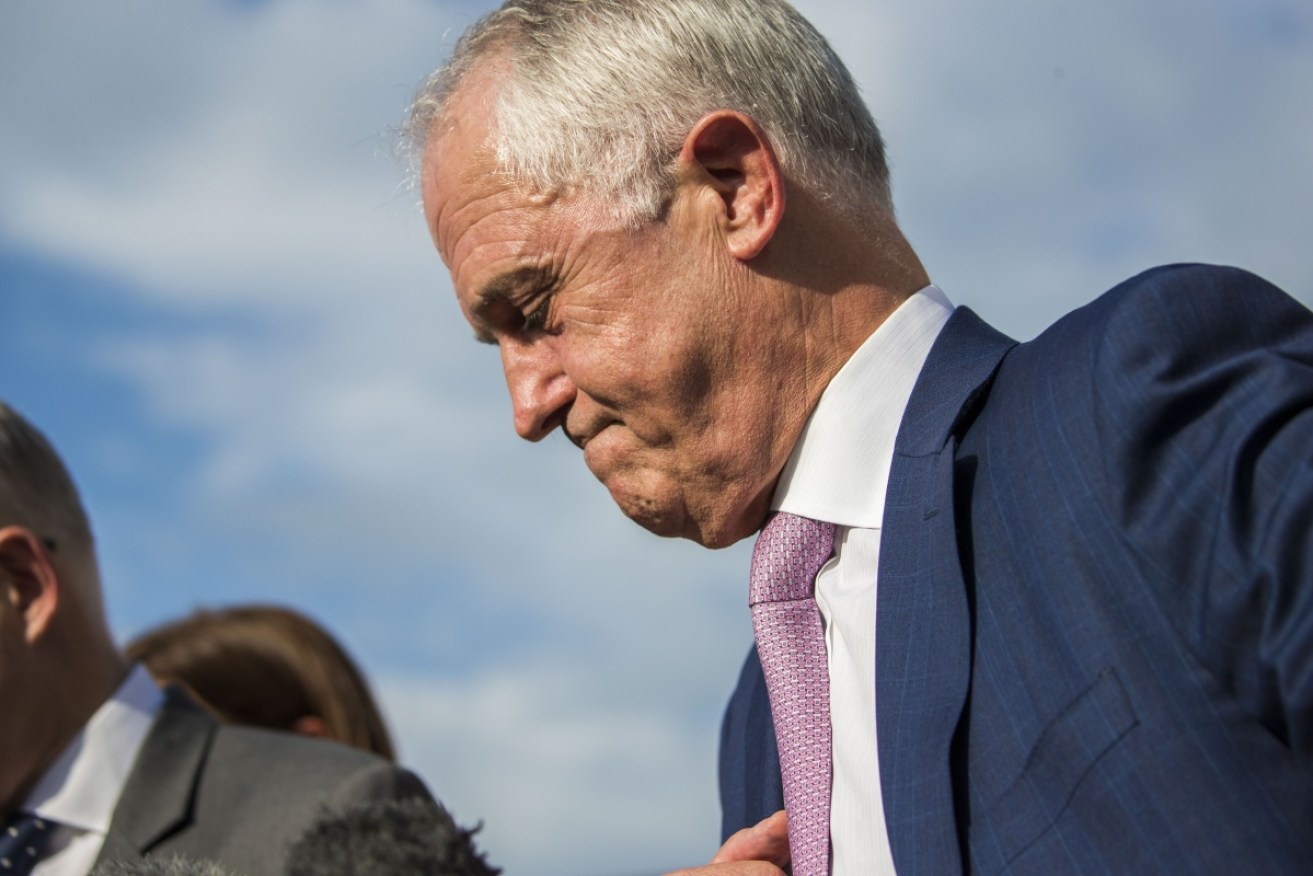Forget polls. The economy is Turnbull’s true measure of failure


The PM has failed to deliver on his promise of better economic management. Photo: AAP
The true measure of Malcolm Turnbull’s failure of leadership is not his 30 straight Newspoll losses but his inability to manage the economy.
Rolling Tony Abbott in 2015, Mr Turnbull declared: “Ultimately, the Prime Minister has not been capable of providing the economic leadership our nation needs.”
Nor has Mr Turnbull. On most critical indicators Australia’s economy has deteriorated further under his leadership, with Scott Morrison as Treasurer, than it did under Mr Abbott, with the hapless Joe Hockey holding the abacus. Here is the dismal data.
Sluggish economic growth
From 2009 to 2013, Australia’s annual economic growth was close to the top among the 34 rich, developed countries in the OECD. Australia and Poland alone averted a recession – negative GDP growth – through the global financial crisis (GFC).
The four years since 2013 have seen an extraordinary boom in global trade, domestic commerce, company profits and job creation. Australia is one of few countries which have not participated in this upswing.
After two failed Hockey budgets, Australia’s annual GDP growth in September 2015 was 2.6 per cent, ranking 14th in the OECD, barely in the top half. It has fallen further since Mr Morrison replaced Mr Hockey. At just 2.4 per cent, the current ranking is 23rd.
Productivity
An impressive four-year streak of quarterly rises shuddered to a halt in mid-2015. In September 2015, labour productivity was 101.3 index points, well down from the peak of 102.8 reached in early 2015.
In the last quarter of 2017, under Mr Turnbull, this slumped to a dismal 100.2, the lowest level since 2012. The 2.0 points drop over the last two quarters is the worst since 1978.
People unemployed
When Mr Abbott took office in September 2013, 692,700 Australians had no job. That was 5.7 per cent of the workforce.
By September 2015, the number of people unemployed had ballooned to 776,300 and the rate risen to 6.1 per cent. Now, after 29 months of Mr Turnbull, the jobless number is 734,100 and the rate 5.6 per cent.
Although that is superficially an improvement on Mr Abbott’s numbers, Australia’s ranking in the world has tumbled through the current global jobs surge. In 2013, Australia’s jobless rate ranked seventh in the OECD. By 2015, Australia had slipped to 14th. It has tumbled further since to 17th now.
In September 2013, 69.8 per cent of all jobs were full-time. This slumped to 68.9 per cent by September 2015 and below 68.0 per cent in January this year. It recovered slightly in February to 68.4 per cent.
At the 2013 election, 133,200 people had been unemployed for a year or more, below 19 per cent of the total jobless. Too many. This expanded dramatically after the election and reached 184,100 when Mr Abbott was deposed. It has risen since then to 194,200 in February, which is 26.5 per cent of the jobless.
Deeper and deeper in debt
This could have been Mr Turnbull’s most humiliating area of economic failure. Fortunately for him, the mainstream media agreed after the 2013 election to avoid the subject completely – the hottest political topic through the Labor years by far.
For the record, these are the progressions from September 2013 to September 2015 to now on debt: Net debt, according to the Finance Department: $161.3 billion, $256.3 billion and $344.9 billion. This rose 59 per cent under Mr Abbott and another 35 per cent under Mr Turnbull.
Gross debt, according to the Office of Financial Management: $270.0 billion, $383.9 billion and $522.3 billion. Up 42 per cent under Mr Abbott and 36 per cent under Mr Turnbull.
Construction collapsing
Spending on building and construction for the 12 months to September 2013 was $232.6 billion, according to the Bureau of Statistics. This slumped dramatically through the next two Abbott years, reaching just $213.6 billion for the year to September 2015.
It has slumped even further under Mr Turnbull to lows not seen since the GFC in 2011. For the year to September 2017, the total was just $195.2 billion.
Other areas of Mr Turnbull’s failure include wage levels, underemployment, retail sales, national income, national net worth, infrastructure and government waste.
The winners under Mr Abbott, however, have been even bigger winners under Mr Turnbull.
Wealth distribution
The wealth of the top 10 per cent of Australians increased from 50.3 per cent of all wealth in 2013 to 51.3 per cent in 2015. It jumped again to 52.3 per cent in 2017. That’s according to Credit Suisse’s annual global wealth reports.
The top one per cent fared even better. From holding 20.4 per cent of all Australia’s wealth in 2013, this rose to 21.4 per cent in 2015 and up again to 22.9 per cent in 2017.
Meanwhile, the share held by the bottom 60 per cent of Aussies fell from 17.2 per cent in 2013 to 16.0 per cent in 2015 and down to 15.3 per cent last year.
This is why Mr Turnbull should go. Not because of his popularity. But because he has failed to manage the economy for the benefit of the majority of Australians.








